How to Identify a Wilson’s Warbler
Updated: Mar. 22, 2024
This Wilson's warbler, a small yellow-colored songbird, has a special field mark that makes it easy to identify—a black cap on top of its head!
On This Page
What Does a Wilson’s Warbler Look Like?
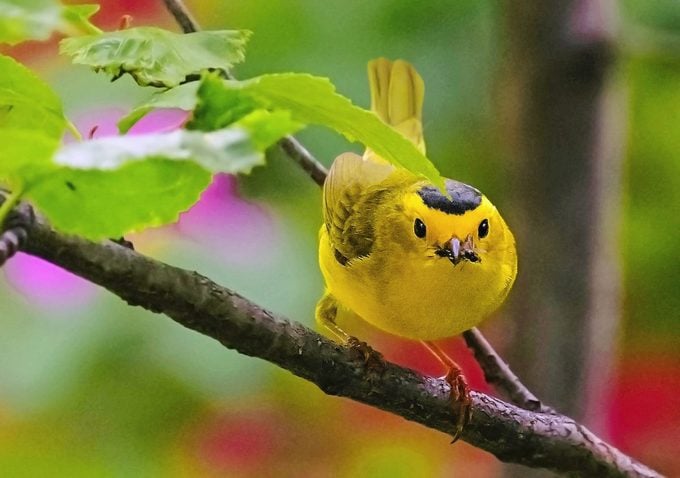
In a sea of small, fast-moving and tricky-to-identify warblers, the Wilson’s warbler is easy to remember. With its lemon-yellow body and a distinctive black cap, it sticks in the memory. Its cap, in fact, has led birders to remember it by saying, “Wilson wears a hat.”
That saying works for male Wilson’s warblers, but it doesn’t apply so well to females. Female Wilson’s warblers follow the same general color scheme as males, but they lack that bold black cap, instead replacing it with olive plumage. Worth noting is that some females do have some black feathers atop the head.
Interestingly, the Wilson’s warbler used to be known by a different name. Now that bird species named after people are being re-named, it’s possible it might return to the original name.
“Pileated warbler, it was called at one point,” says Dr. Kevin McGowan, senior course developer for the Cornell Lab of Ornithology’s Bird Academy. If that makes you think of a huge pileated woodpecker, it might seem an odd name choice for a tiny warbler…but consider the pattern of these birds’ plumage. “[The warbler was called ‘pileated’] because ‘pileated’ refers to the top of the head, and it has a cap,” Kevin says.
Discover more fascianting facts about warblers.
Wilson’s Warbler Range and Habitat
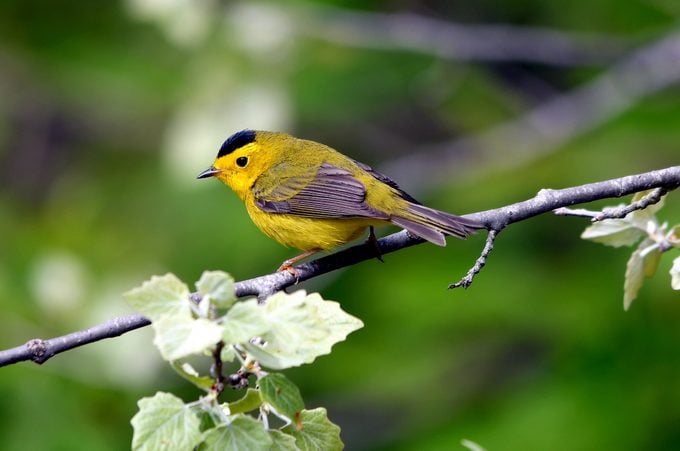
If you live anywhere within the United States, you have a good chance at spotting a Wilson’s warbler. They pass through the entirety of the country during fall and spring migration. They stick around along the California coast, the Pacific Northwest, and in Canada for all of breeding season.
“The Wilson’s warbler is interesting because it occurs all over the United States, but it’s a more common bird in the West,” says Kevin. “It’s relatively uncommon in the East, depending on where you are. They like wet shrub thickets, but they can be found just about anywhere, especially during migration.”
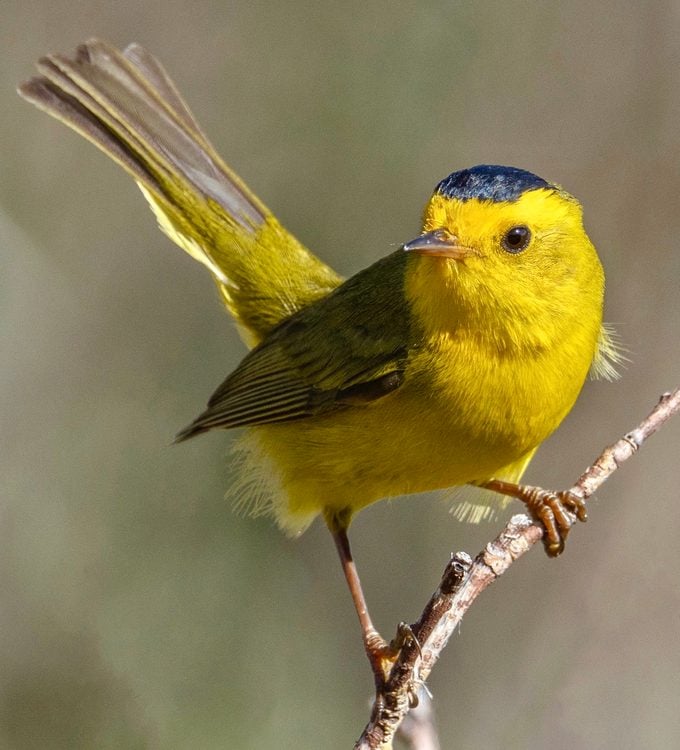
Look for them in shrubby areas near streams in mid- to late spring. Typically, the Wilson’s is one of the last migrating warblers to arrive. As a definite perk for birders, the Wilson’s tends to be found closer to the ground than other warblers, who can often require much uncomfortable neck-craning to spot.
These amazing pictures of warblers will make you want to go birding.
Diet: What Does a Wilson’s Warbler Eat?
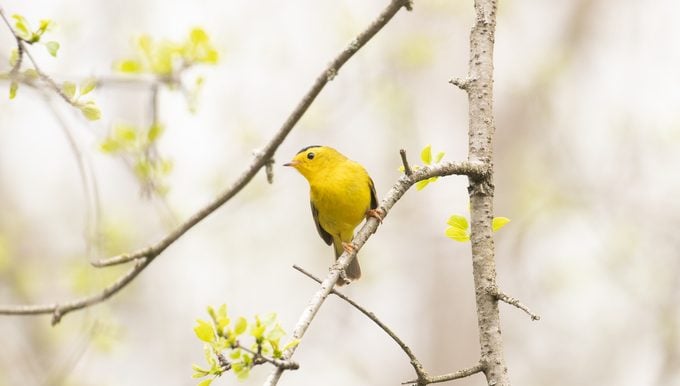
As a warbler, it’s unsurprising to hear the Wilson’s dines on insects. Snatching spiders, caterpillars, and beetles in brush, they’re also talented fliers and will grab flies, bees, and other insects in the air.
Learn more about what warblers eat and how to attract them.
Nesting Habits
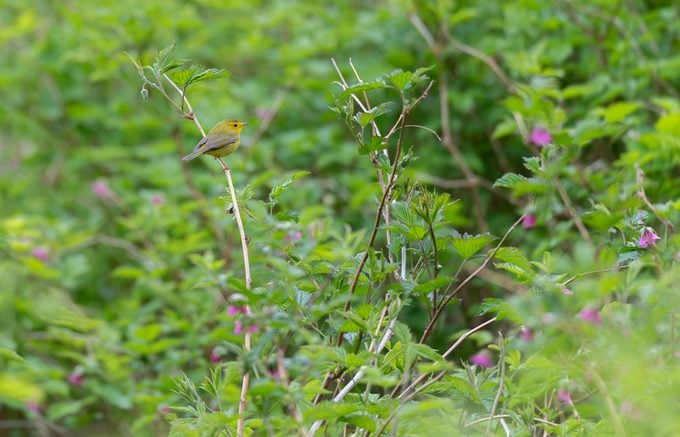
Female Wilson’s warblers are ground-nesting birds. They’ll construct their nest in a concealed location and might even wedge it between branches in shrubs to keep it in place. Raising up to two broods per season consisting of two to seven chicks, these baby birds will remain in the nest for a week and a half before leaving the nest.
Learn how to identify a yellow warbler.
Wilson’s Warbler Song
This species has a short, simple song with repeating notes, pausing before singing again. Unlike most other warblers, females also occasionally sing.
Bird songs courtesy of the Cornell Lab of Ornithology
About the Expert
Lifelong birder and ornithologist Dr. Kevin McGowan is a senior course developer for the Cornell Lab of Ornithology’s Bird Academy. He earned a Ph.D in biology at the University of South Florida.
Sources
- All About Birds – Wilson’s warbler
- Kaufman Field Guide to Birds of North America
- Merriam-Webster online dictionary
Why Trust Us
For nearly 30 years, Birds & Blooms, a Trusted Media Brand, has been inspiring readers to have a lifelong love of birding, gardening and nature. We are the #1 bird and garden magazine in North America and a trusted online resource for over 15 million outdoor enthusiasts annually. Our library of thousands of informative articles and how-tos has been written by trusted journalists and fact-checked by bird and garden experts for accuracy. In addition to our staff of experienced gardeners and bird-watchers, we hire individuals who have years of education and hands-on experience with birding, bird feeding, gardening, butterflies, bugs and more. Learn more about Birds & Blooms, our field editor program, and our submission guidelines.




















